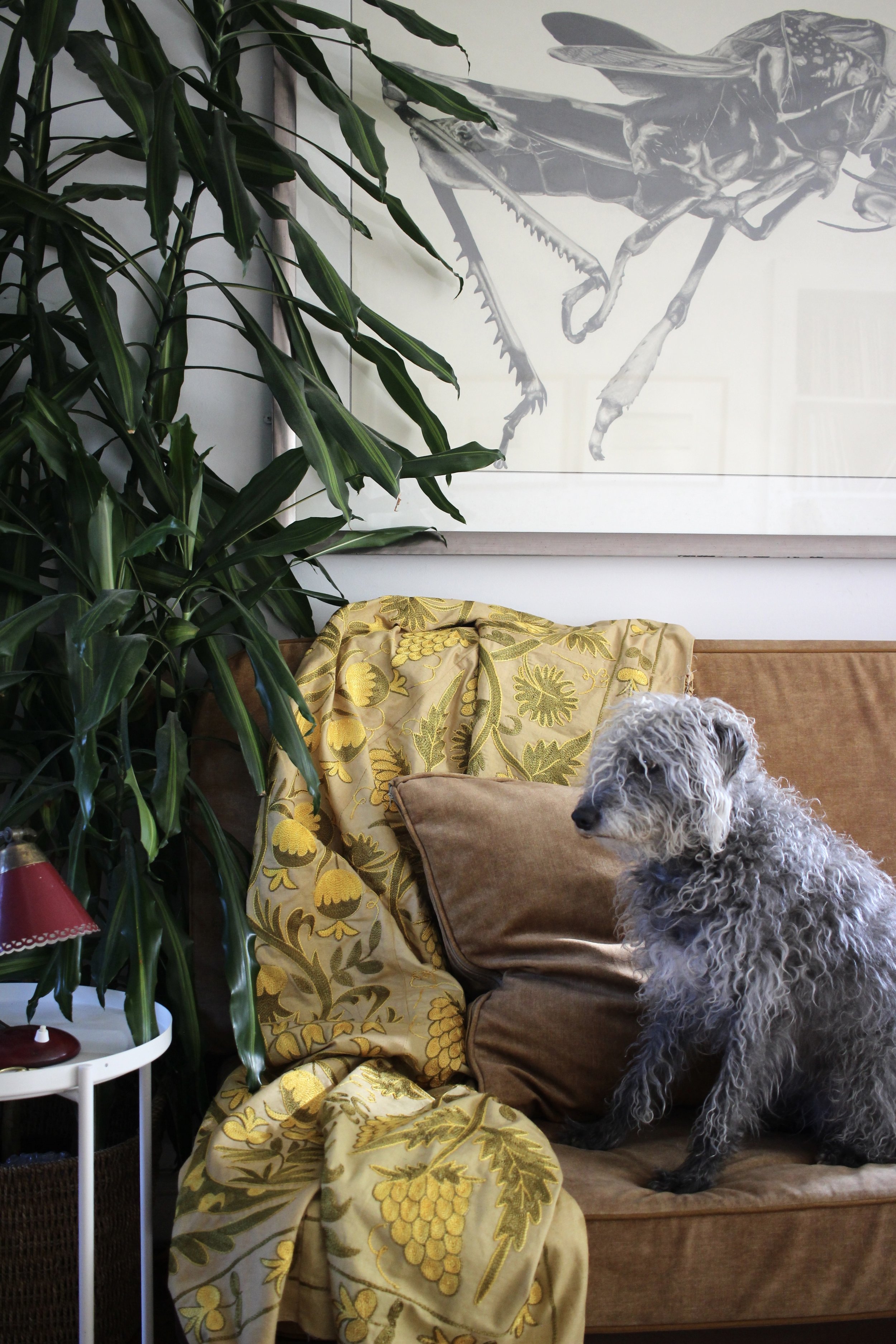Are you sitting comfortably?
Our guide to buying a sofa that looks good, feels great and is made well.
Buying New
Buying new means your sofa purchase can support British business and time honoured crafts whilst carrying a reduced carbon footprint. Win, win, win.
Look for a British maker who can prove that their frames are made with sustainably sourced, FSC certified beechwood and manufactured within the UK. Darlings of Chelsea have been making sofas to order here in the UK since 2022 and third generation family business, Sofas & Stuff, manufacture all of their products in their factory in Preston, Lancashire. The latter has a showroom in Henley which is worth a visit if you’re local- nothing like trying a sofa out before buying! Oxfordshire folk might like AsNew Upholstery in Abingdon who have a particularly impressive sustainable furniture line that uses eco friendly materials such as rubberised coir and layered wool in their beautifully constructed pieces.
Love-your-home, a carbon neutral company, uses a portion of your purchase towards their tree planting scheme and their sofas come with a lifetime guarantee. What’s on the inside counts too, with companies like Sofa.com ensuring that their feathers and filling comply with the Responsible Down Standard. No force feeding or live plucking here!
We used recycled velvet to recover this mid century sofa bed. Scruffy hair, model’s own…
“In fact, if you struggle to commit when it comes to decorating then this can actually be a very fruitful way to reduce your options and lock in a key colour for your scheme.”
Buying Vintage
The rise of platforms like Vinterior and Pamono means that vintage sofa glory is there for the taking! If you’re after the clean lines of mid century pieces or leather try Georgia over at Aelfred London on Vinterior. Or for a more traditional style, look on Love Antiques. This chesterfield is a steal.
Antique pieces often come in smaller dimensions which can be super helpful if your room doesn’t have the proportions for a big ol’ modern sofa. Don’t be too quick to disregard them out of fear of ‘dark wood’ if you’re struggling with layout in a tighter space- you’d be surprised!
Ideally, see it before you buy so you can give the frame a once over. I know this isn’t always possible but any reconstruction will drive the price up when it comes to reupholstering your treasured piece. Ask for pictures and a video walk around if need be, keep courier fees down by filtering your location first and make sure you leave a contingency in your budget for structural work before spending it all on a fabric that you love!
Choose a fabric with a rub count of at least 20,000 that complies with fire regulations and keep an eye out for the things that have a bit more environmental benefit like quick growing flax linen or recycled velvets.
Plenty of clients love their Loaf sofas and this one was no exception! A 2 metre wide sofa like this needs about 15 metres of fabric to be recovered
Get more bang for your buck.
What’s that I hear you cry? These sofas are expensive, Sabrina!
Yes, buying a sofa can take up a significant chunk of your decorating budget. So how to mitigate or manage that cost?
There’s a tonne of redundant, near good as new stock out there that needs a home and happily comes with a reduced price tag
Plenty of good stock ends up off the shop floor: think end of line or fabrics from a previous season. My top secret share would be Furnishhh! which carries some excellent stock from the likes of sofa.com and one or two other top names with chunky price reductions.
2. Keep an eye out for warehouse sales
If you like the look of Love-Your-Home’s stock then you might like to peruse their upcoming warehouse sale at the end of February. The new year can be a good time to buy, too with many companies offering discounts of up to 35%. Outlet and ex-display pieces can often be in excellent nick even if you have a smaller number to choose from. In fact, if you struggle to commit when it comes to decorating then this can actually be a very fruitful way to reduce your options and lock in a key colour for your scheme.
3. Work with a designer
Working with a designer means that you can access some or all of the trade discount they might receive from a company which is a good way of keeping your cost down. This doesn’t just mean if you’re buying new, they can help you negotiate on an older piece and make your money go further when it comes to buying fabric at trade prices, too.
So there we have it. Time to go and put your feet up?
Until next time,
S

